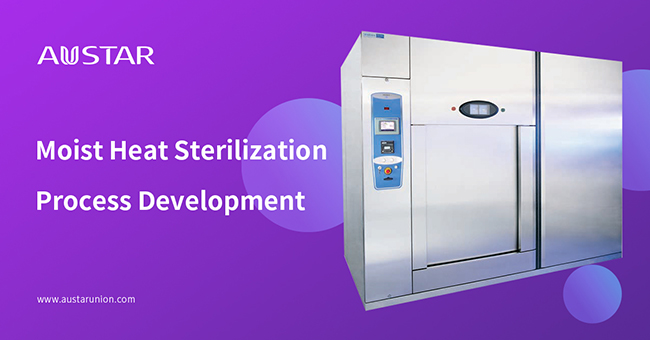Moist Heat Sterilization Process Development
News & Insights2024-06-25
Items sterilized by moist heat must withstand high temperature ( approximately 110℃ to 121℃) exposure, and maintain their functionalities, including microbial barrier function after undergoing changes in heat, humidity, and pressure (positive pressure and vacuum in some conditions). To be able to choose the right sterilization process, one must know what method suits the material in question more, and it is necessary to assess the material and structural tolerance of the items to be sterilized. The sterilization loads are usually divided into porous/hard goods loads and liquid loads.

Moist Heat Sterilization Methods
The saturated steam sterilization process and air overpressure sterilization process are the most frequently used sterilization methods. The saturated steam sterilization process is often used for loading porous/hard goods, and the air in the sterilization chamber and the loads should be removed before sterilization. The air overpressure sterilization process requires establishing the air overpressure set point and gradient, and the hardness of the container and product characteristics such as heat transfer rate should be considered when defining the air overpressure start point in the sterilization cycle.
Temperature Distribution Study
The temperature distribution study is to verify uniform temperature distribution in the sterilizer chamber, and for some processes, to locate the slowest-to-heat position (or the cold spot), such as positions near the door, corners, and extremes inside the sterilizer. It is composed of no-load heat distribution and loaded heat distribution studies.
Loading Mode Development
When developing the loading mode, for porous/hard goods, the loads are not easily fixed, all combinations selected between minimum and maximum loads should be verified, so that minimum and maximum loads can be used during validation. For liquid loads, it is usually uniformly loaded products.
Heat Penetration Study
Samples for heat penetration study should be located in the cold spot (the slowest-to-heat position) of the chamber if it exists during former studies. For liquid loads, placebo materials with matched viscosity and heat capacity of products could be used. Generally, at least 10 thermocouples should be used for each run.
Cold Spot Study
1.Cold Spot Study on Porous/Hard Goods.
The placement of the heat penetration probe should be based on the positioning of mass, physical size and geometry. For example, the middle of a pipe with two open ends is the slowest- to- heat position. For mixed loads, multiple items need to be tested to find the slowest- to- heat product, and temperature probes should be placed on or within the product to do the heat penetration evaluation of the entire product without affecting the result.
2.Cold Spot Study on Liquid Goods.
For the cold spot of liquid-filled container, a series of tests should performed by placing multiple probes at different positions or layers throughout the container to determine the slowest-to-heat area or position. The heating condition is related to the physical shape of the product and the filling volume. For large-volume liquid products, the cold spot is generally near the bottom of the vertical axis of the product center. It should be noted that the change to placement will also affect the position of the cold spot.
Our services
AUSTAR provides moist heat sterilization process development services for sterile drug manufacturers to help clients optimize the sterilization process, improve sterility assurance levels, and provide patients with high-quality drug products.
References
[1]EC EudraLex - Volume 4 GMP guidelines Annex 1 Manufacture of Sterile Medicinal Products, 2022
[2]EMA Guideline on the sterilisation of the medicinal product, active substance, excipient and primary container, 2019
[3]BS EN285:2015 Sterilization – Steam sterilizers - Large sterilizers
[4]PDA TR No.1 Validation of Moist Heat Sterilization Process, 2007







 Search
Search 中文
中文






